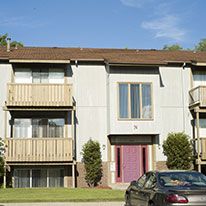The well-being of their children is top-of-mind for parents. As such, parents should identify the potential risks and vulnerabilities within the home, and work with their kids to develop a go-to plan in case an emergency happens.
To help better prepare children in the event of an emergency and give parents peace of mind, we’ve highlighted three important home security tips to teach children:
1. How to Work Your Home’s Alarm System
To help monitor the security of their homes against a variety of emergency situations, parents should invest in a 24-hour alarm monitoring service. The alarm system sends alerts to a monitoring center where operators are available 24/7 to dispatch emergency personnel to quickly respond to scenarios like break-ins, triggered sensors or detectors, and environmental hazards.
House alarms are one of the most common and effective ways to secure homes. With an automated home alarm system, emergency crews can be dispatched quickly to respond to emergencies. While the technology may sound advanced, teaching kids how to use it correctly should be simple.
Today’s children are more familiar with technology than parents may realize. In a 2015 study, nearly 97 percent of children under the age of four had used a smartphone or other mobile device.
Start by teaching kids the basics: how to arm and disarm the system, as well as how to identify different alerts. When instructing them, letting the alarm sound briefly for kids to familiarize themselves with the noise may eliminate panic later.
Parents should work with their kids to come up with a safe, yet memorable arm/disarm code for their alarm system. Finally, stress the importance of not sharing the code with others to prevent having to change it later.
2. The Importance of Locking Doors and Windows
It may seem second nature to most of us to lock up doors and windows before leaving the house; however, it’s surprising how many people forget.
In 2014, more than 35 percent of all burglaries were done through unlawful entries. In other words, the burglar did not have to use force to get into the house. Leaving doors, windows and even garages unlocked or open for any period of time makes a home vulnerable to property crimes.
When kids are leaving in a hurry, checking locks may not be top priority. Parents should not only remind their kids of the safety threats posed when leaving a door or window unlatched, but also help them learn a convenient way to check.
For instance, parents and children can receive mobile alerts to their cell phones letting them know when a window or door has been opened. This can serve as a quick and easy way to check which access points need to be secured.
3. What to Do in the Event of an Emergency
In any emergency, parents and children should have an already agreed-upon plan to eliminate as much stress as possible.
In the event of a house fire, choose two potential escape routes out of the home and a meeting location. This location must be outside and a safe distance away from the house.
For break-ins, have a few options ready. For example, regroup at a neighbor’s house, or if leaving the house isn’t a safe option, choose a secure, hidden space within the house that a burglar isn’t likely to find.
If the alarm system has not already been set off, children should be reminded to call 911 as soon as they have reached their safe zone. When speaking to an emergency dispatcher, remind kids to remain calm and speak quietly if the intruder is still in the home.
Finally, the best way to solidify an emergency plan is to practice it with all members of the household. After reenacting the scenario a few times, parents and children should know how and where to exit the home, and where the designated safe zones are.
What else should you teach your kids about home safety and security? Share your thoughts in the comment section below.



